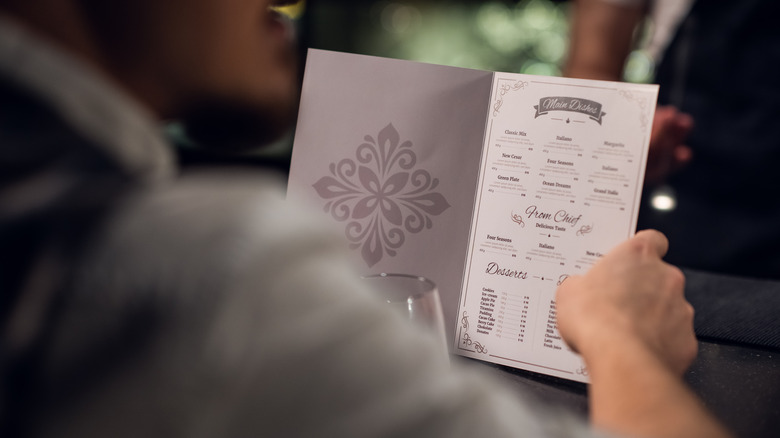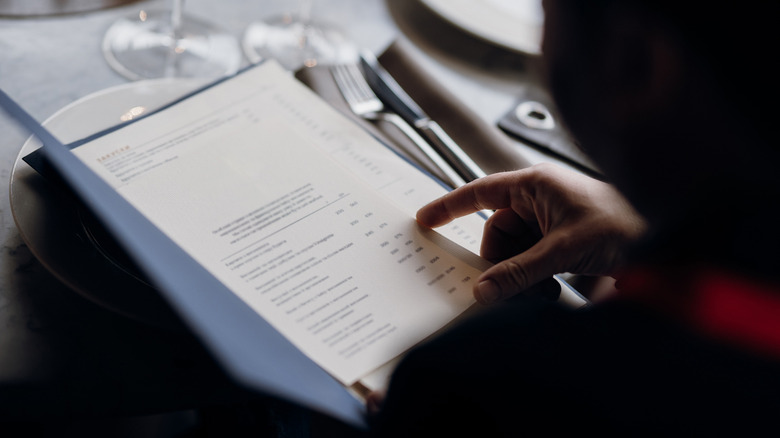The Real Reason You Rarely See Dollar Signs On A Restaurant Menu
Just as grocery stores use various marketing strategies to convince shoppers to buy more items, restaurants also employ a few tricks to pull people in. One major use of psychology by the restaurant world involves color theory. Think about fast food restaurants, in particular. Most fast food signs are red and yellow (hi, McDonald's and Burger King) because these colors stimulate your appetite, according to the Institute of Culinary Education.
Once you set foot inside a restaurant, a whole new host of psychological strategies come into play. Think about seating. In a fast food restaurant, the seating is usually hard plastic and kinda uncomfortable. In a fancier dining establishment, on the other hand, the seating is more comfortable. This makes a lot of sense once you realize that fast food relies upon high turnover to make a profit, while sit-down restaurants want to keep you longer.
Once restaurants have you seated at a table, however, they give you a menu packed with still more psychological tactics.
A dollar sign (or lack thereof) has more influence than you think
While $17.91 and 17.91 are technically the same amount, your brain processes them differently. Research shows that removing the dollar sign from an amount on a menu "disassociates" the amount from money, according to LifeHacker). In other words, 17.91 looks like any another number, not like a dollar amount, making you much more likely to order that menu item.
According to Global Restaurant Consultants, leaving off the dollar sign not only makes the menu feel friendlier, it also "keeps the guest focused on the experience itself more than the cost of the experience."
On a similar note, you might notice upon closer examination that restaurant menus do not typically list items and prices in columns. They don't want you to skim for the least expensive item. Instead, they pull you in with tantalizing descriptions and strategic placement of high-ticket menu items. They might also include more expensive items for the sole purpose of making the rest of the menu's offerings seem less expensive by comparison.

